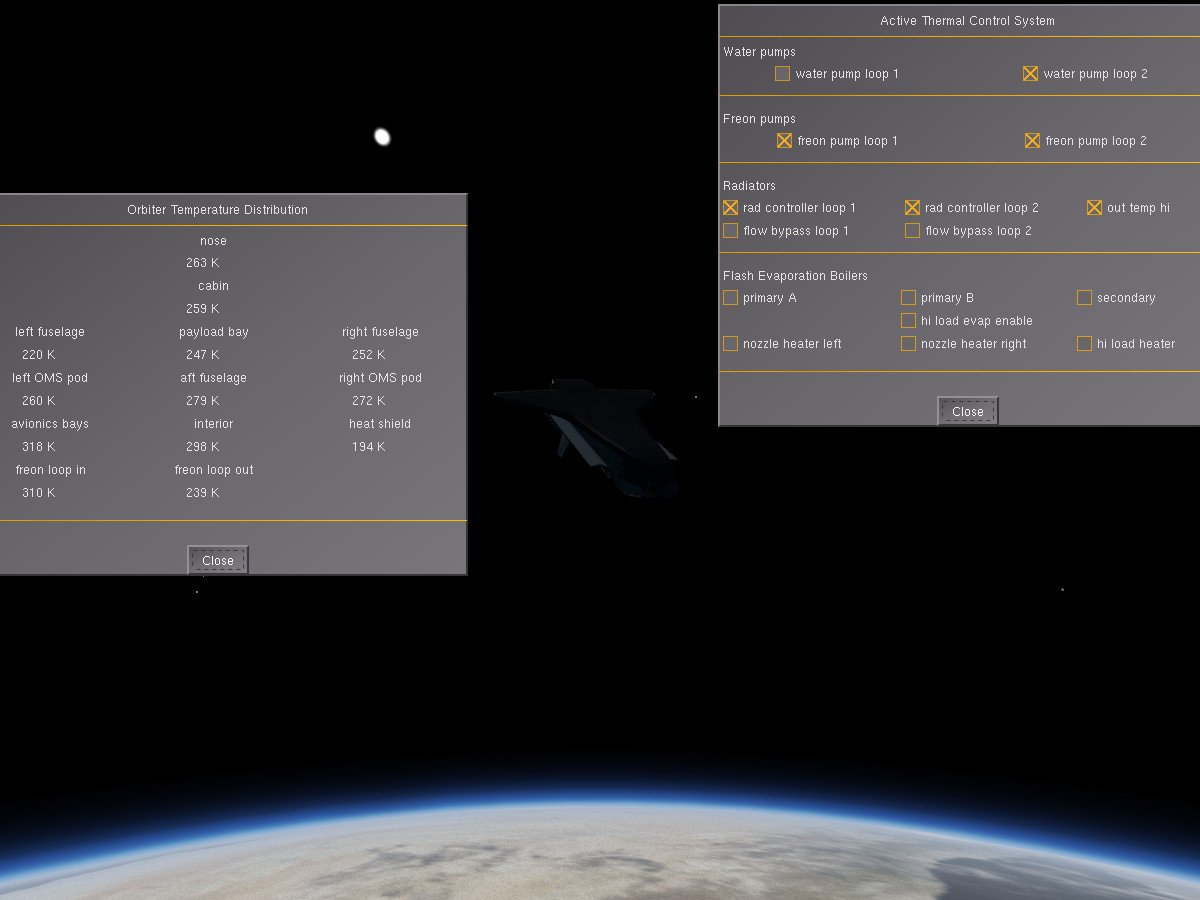I would like to implement a cooling subsystem for the delta-glider, partly to make the radiator do something useful, and partly to fill the rather blank right half of the overhead panel ...
To get me started, I'd like to somewhat model the cooling system on the space shuttle. I have a few questions regarding that:
To get me started, I'd like to somewhat model the cooling system on the space shuttle. I have a few questions regarding that:
- Is the shuttle cooling circuit purely liquid, or does it include phase changes?
- What are the typical temperatures of the coolant at the various positions of the loop, in particular on entering/exiting the radiators?
- How much power is radiated off the radiators, and how much does the efficiency drop if the radiators are exposed to the sun?
- What's the typical power consumption of the various subsystems, in particular avionics and life support?
- Would it make sense to implement the cooling system with two loops, one for collecting heat from systems/cabin and dumping it in a heat reservoir/exchanger, and the other to pick up heat from the exchanger and pushing it through the radiators, or should it be a single loop?
- Given that the DG radiators are rather undersized and can't always be deployed, would it be practical to also use the wings as radiators?
- How much heat energy should be expected to propagate from the DG engines to the main fuselage during operation?

